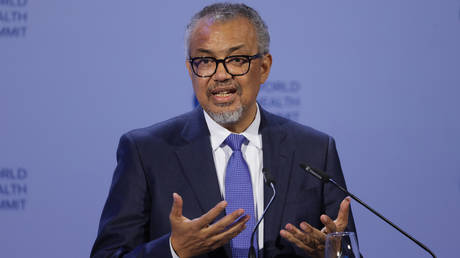A Russian foreign deputy minister said Moscow is keeping open the option of deploying missiles in Asia if the US starts putting weapons in the Indo-Pacific.
Sefa Karacan/Anadolu Agency/Getty Images
Russia is considering deploying missiles in Asia if the US stations more systems there, a top official said.Sergei Ryabkov, a deputy foreign minister, said it was an option “discussed many times” by Russian leaders.The remark hints at a potential for Russia to enter the fray in a region fraught with US-China tensions.
Sergei Ryabkov, one of Russia’s deputy foreign ministers, said on Monday that Moscow is considering deploying its short- to medium-range missiles in the Asia-Pacific.
Speaking to Russian state media, Ryabkov described the option as a potential response to reports that the US may deploy its own systems in the region.
“Of course, this is one of the options that has also been discussed many times,” Ryabkov said, per the TASS state news agency.
He had been asked by a reporter if Russia might station its missiles in Asian countries, according to the agency.
“The appearance of corresponding American systems in any region of the world will predetermine our further steps, including in the sphere of organizing our military-technical response,” he added, per TASS.
Ryabkov’s remarks signal a potential for Russia to step into a region that’s primarily been a hotbed for tensions between Washington and Beijing.
His comment comes as Japanese media outlet Kyodo News reported on Sunday that Washington and Tokyo are jointly drafting Taiwan contingency plans that would station US missile units in the Philippines and the Nansei Islands.
The latter is an island chain stretching from Japan’s southwest coast to Taiwan, and temporary bases there would allow the US to establish a missile presence close to the self-governed island.
Citing unnamed Japanese sources, Kyodo News reported that in the event of a Taiwan crisis, the Japanese-American plan would send a US Marine Littoral Regiment to the Nansei Islands with its High Mobility Artillery Rocket Systems, or HIMARS.
The 12th Marine Littoral Regiment is already based nearby in Okinawa, but Kyodo News did not cite any specific unit.
Meanwhile, the US Army would respond by deploying long-range units from its Multi-Domain Task Force to the Philippines, per Kyodo News.
The US has stationed a Mid-Range Capability “Typhon” system in the Philippines since April when it was first deployed for a joint military exercise with Manila. The ground-based system is one of Washington’s newest and can fire both the Tomahawk cruise missile and the Standard Missile 6 interceptor.
In late September, the Associated Press reported that the US and the Philippines had agreed to keep the Typhon indefinitely in the archipelago.
The decision deeply angered China, which had for months demanded that the system be removed from the Philippines.
On early Monday morning Beijing time, Chinese state media agency Xinhua published Ryabkov’s comments in a brief report.
All of this is openly happening in the shadow of the Intermediate-Range Nuclear Forces Treaty‘s collapse.
The agreement, signed in 1987, was a pact between the Soviet Union and the US to ban nuclear and conventional ground-launched ballistic and cruise missiles with ranges between 500 to 5,500 kilometers.
However, the treaty began to splinter two decades later as the US and its allies accused Russia of violating the agreement by building and deploying the Novator 9M729 cruise missile.
In 2019, the Trump administration announced the US’s withdrawal from the treaty, saying Russia was no longer complying.
Moscow has, in response, repeatedly blamed the US for withdrawing from the agreement.





+ There are no comments
Add yours